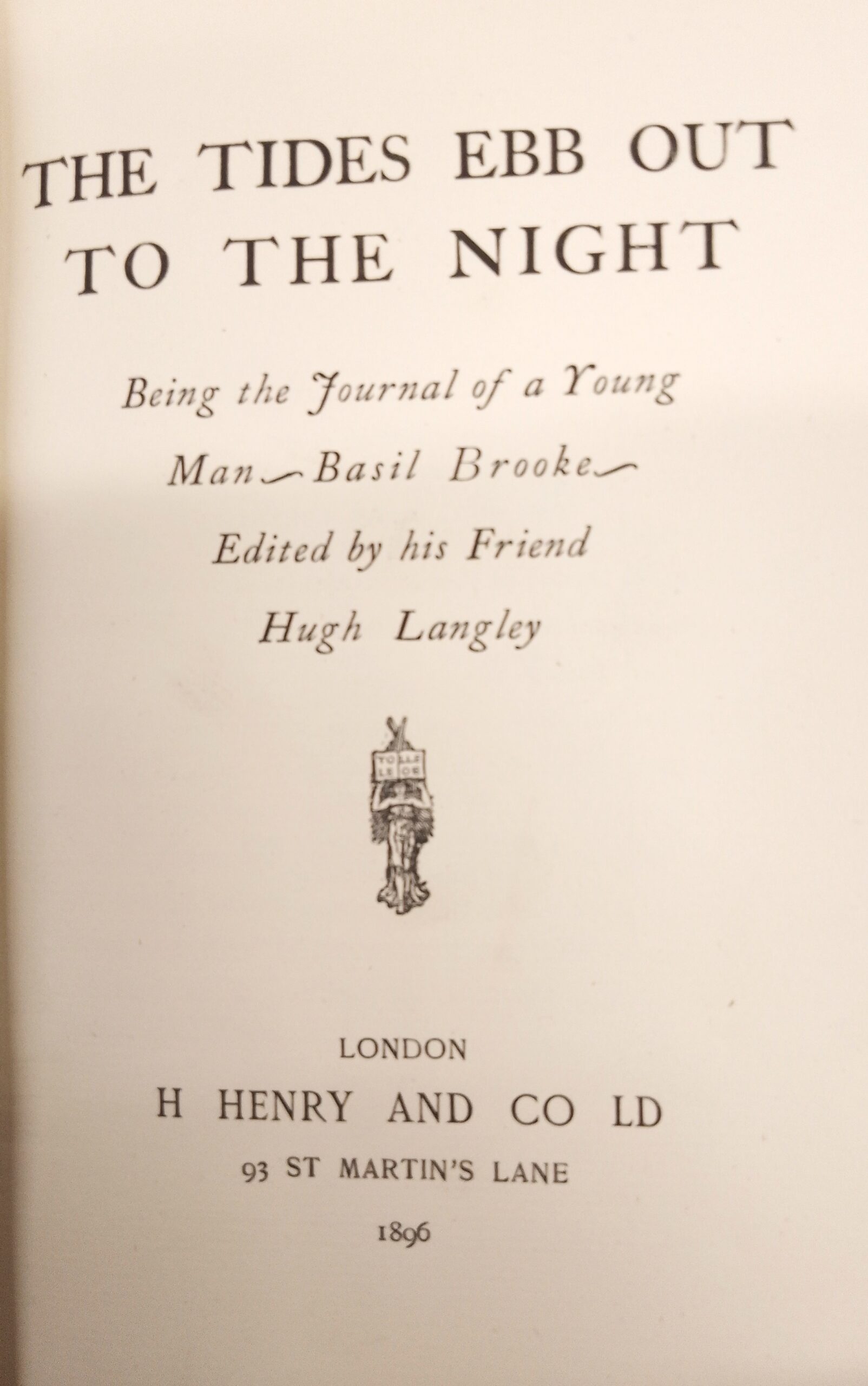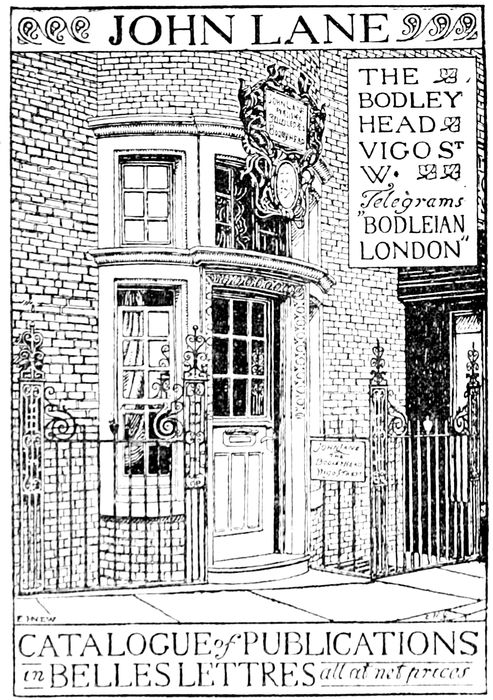
The Tides Ebb Out to the Night; Being the Journal of Young Man – Basil Brooke – Edited by his Friend Hugh Langley was published in July 1896 by H. Henry & Co., long after public interest in decadent themes had tapered out. I can find no information about Hugh Langley, the book’s true author, but H. Henry was best known as the publisher of The Pageant, a literary and arts annual featuring work by Yeats, John Gray, Maeterlinck, Beerbohm, and reprints of the Pre-Raphaelites. They sold avant-garde sensationalism to a dwindling readership who had remained interested in decadent culture even after the Wilde trials and the resulting censorship. Edgar Jepson, whose Passion for Romance was published by H. Henry, recalled their final years succinctly: ‘I derived from it kudos as the time but no money, for the firm could not find readers enough for the books of the quality it was set on publishing, and failed’.
The Tides Ebb Out to the Night was one of these books without an audience, and feels now like a decadent novel written after the fact, a checklist of familiar characters and fin-de-siecle affectation. It is impossible to work out if the book is meant to be a send-up. The decadent pose was always ironic, languid, at a remove from the commonplace in language as much as in life. Was it even possible in 1896 to write sincerely as an aesthete without appearing self-mocking?
Presented as the edited journal (‘without a single omission or alteration’) of a young writer, it begins in 1889 with a potted history of Basil Brooke’s solitary, sensitive youth at Eton and then at Oxford as a student who worshipped at the feet of Walter Pater. His aesthetic mission is to follow the French ‘cult of the self’:
And now I had better hasten to explain at once, that in the following record I am going to concern myself wholly and solely with the portrayal of me – with the moi; the exquisite, the perennial, the precious and comforting moi-même of the French.
The narrative processes into the 1890s where Langley is revealed as a character in his own book, a sculptor (‘and, I regret to add, an idealist’) who acts as a mentor to young Basil. Basil publishes a small poetry collection called The Dreams of a Boyhood, and a novel of pagan revelry, The Sicilian. He discovers fellow aesthetes and fashionable drug culture, spending years in Europe writing despondently from hotel rooms about friends, lovers, and literature.
While The Academy refused to take it seriously, the reviewer for the Atheneum was more forgiving: ‘The thing speaks for itself and for what it is … We seem to hear echoes, if not first-hand opinions and beliefs, and especially disbeliefs, of a certain coterie of young men not unknown to fame of a kind. But the book has inelegancies of diction and expression into which an exponent of “art for art’s sake” should not have been betrayed.’
Arthur Machen read the novel in December 1896 when writing The Hill of Dreams, though did not record his opinion of it. Did Basil Brooke’s eventual death inspire the tragic fate of Machen’s own Lucian Taylor, who dies at his desk after a frenzied laudanum addiction? As the journal nears its end, Basil contemplates suicide, which ‘may not be in the fashion, yet one may at last grow so susceptible to one’s environment of impressions that continued life becomes almost impossible’. Even in his final letter to Langley Basil tries to distance himself from ‘the common suicide’. The book is cut short by an editorial note revealing that Basil was last seen pacing the deck of a ship bound for Alexandria.
‘It is believed that he must have fallen overboard with a sudden lurch of the vessel; for next morning his place was empty. It will always be empty now’.

 The illustration above is by the English artist Edmund Hort New (1871-1931), who worked with Lane on new editions of classics such as The Compleat Angler and The Natural History of Selbourne. New’s Arts and Crafts style and his preference for sequestered, unpopulated scenes gives his cover for the Bodley Head’s catalogue, which he drew while staying with Lane in July 1895, a quaint and respectable appeal. It is like something out of a children’s book with its neat brickwork, the doorway built snugly under its curved lintel, and the famous Sign of the Bodley Head hanging proudly over the dark glass. To think that this is the place that published The Yellow Book, Oscar Wilde’s Salomé, and books by Arthur Machen, M. P. Shiel and Aubrey Beardsley, all of which were attacked at one point or another by the philistine press for moral indecency.
The illustration above is by the English artist Edmund Hort New (1871-1931), who worked with Lane on new editions of classics such as The Compleat Angler and The Natural History of Selbourne. New’s Arts and Crafts style and his preference for sequestered, unpopulated scenes gives his cover for the Bodley Head’s catalogue, which he drew while staying with Lane in July 1895, a quaint and respectable appeal. It is like something out of a children’s book with its neat brickwork, the doorway built snugly under its curved lintel, and the famous Sign of the Bodley Head hanging proudly over the dark glass. To think that this is the place that published The Yellow Book, Oscar Wilde’s Salomé, and books by Arthur Machen, M. P. Shiel and Aubrey Beardsley, all of which were attacked at one point or another by the philistine press for moral indecency.